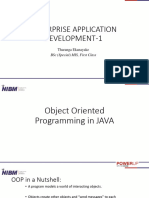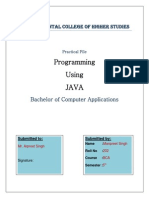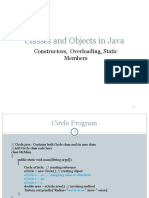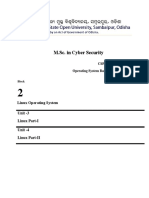0% found this document useful (0 votes)
39 views49 pagesBasics, OOP, and Interfaces
The document discusses Java programming concepts like classes, objects, inheritance, polymorphism, interfaces, packages and abstract classes. It provides examples of defining classes with methods and constructors. It also explains concepts like inheritance, polymorphism, abstraction, final methods and variables.
Uploaded by
gunarathneisuri11Copyright
© © All Rights Reserved
We take content rights seriously. If you suspect this is your content, claim it here.
Available Formats
Download as PDF, TXT or read online on Scribd
0% found this document useful (0 votes)
39 views49 pagesBasics, OOP, and Interfaces
The document discusses Java programming concepts like classes, objects, inheritance, polymorphism, interfaces, packages and abstract classes. It provides examples of defining classes with methods and constructors. It also explains concepts like inheritance, polymorphism, abstraction, final methods and variables.
Uploaded by
gunarathneisuri11Copyright
© © All Rights Reserved
We take content rights seriously. If you suspect this is your content, claim it here.
Available Formats
Download as PDF, TXT or read online on Scribd
/ 49




















































































































